#OTD on February 5, 1919, the sixth day of the Joint Committee of the Senate and the House in the Investigation of the Texas State Ranger Force (hereafter, “Canales Hearings”) took place in the Texas state capitol.
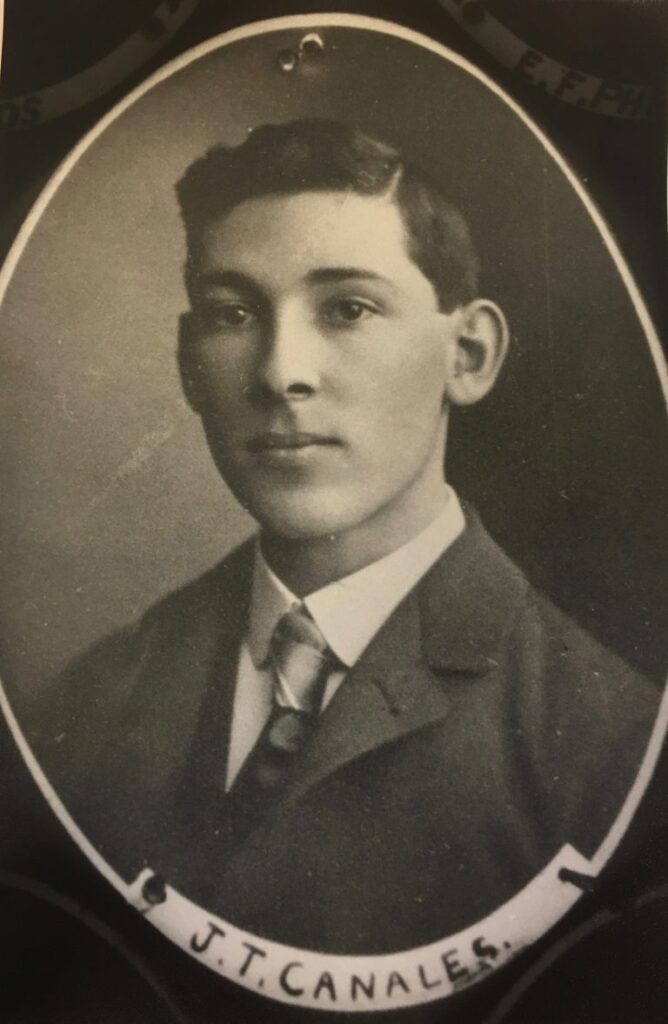
On this day, more evidence documenting Ranger violence against both ethnic Mexicans and Anglos was introduced in testimony, and Ranger leadership sharpened its racist counterattacks. https://www.tshaonline.org/handbook/entries/joint-committee-of-the-senate-and-the-house-in-the-investigation-of-the-texas-state-ranger-force-canales-investigation
The committee first heard from Virginia Yeager, Duval County rancher and advocate for women’s suffrage. She was the only woman to testify. Her whiteness and citizenship let her voice be heard directly, not the case for the widows and daughters of ethnic Mexican victims.
Yeager testified that Ranger Pat Craighead threatened to whip a mechanic “like a tied dog” unless he immediately repaired his car, and that Rangers routinely fired their weapons in the town of San Diego. “It was and still is a reign of terror.”
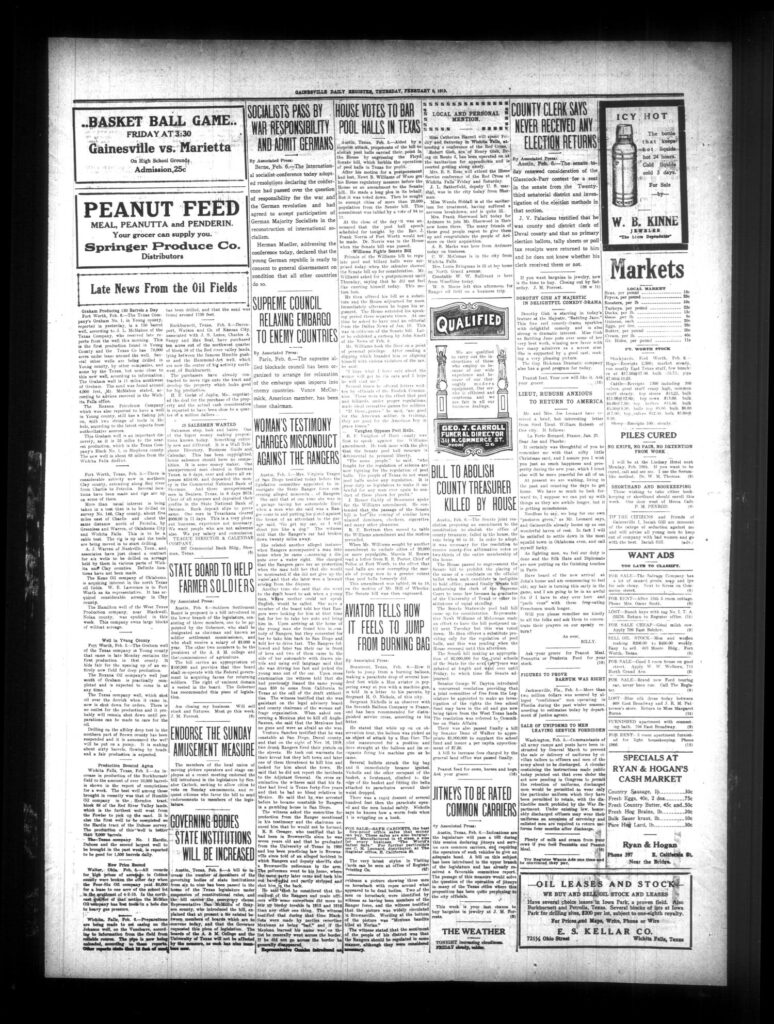
Next up was San Diego constable Ventura Sánchez. South Texas was one of the few places in the United States in the 1910s in which non-Anglo men held elected office and were authorized to use force to uphold the rule of law. Sánchez was one such officer.
Sánchez testified that he arrested Rangers George Hurst and Daniel Hinojosa. “They were drunk and raising thunder, that’s all.” Hurst threatened that if “I ever see you before me I am going to shoot the hell out of you, you son of a bitch.”
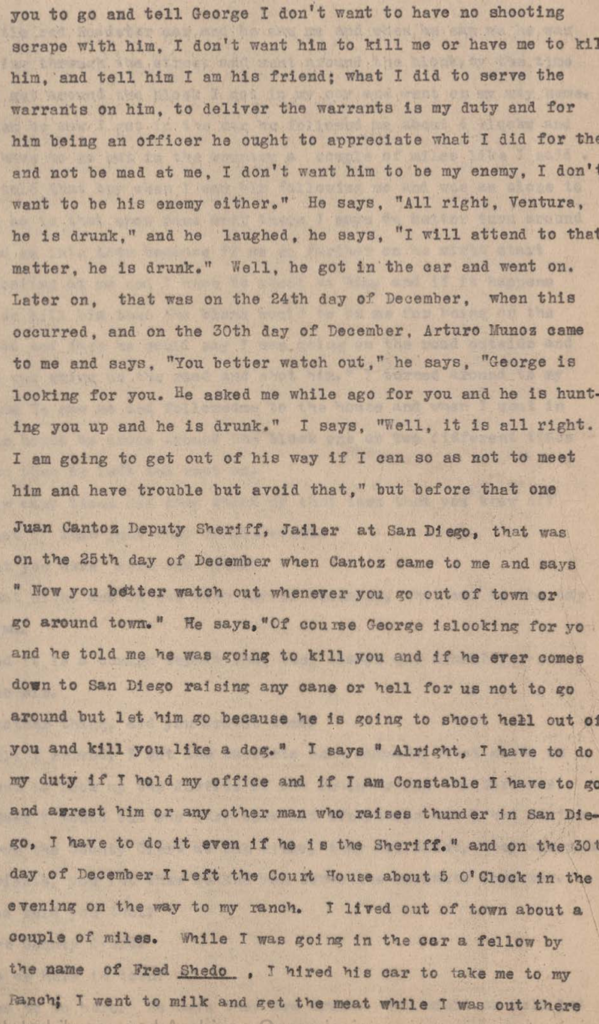
At the end of his testimony, Sánchez asked the committee for “some protection” from Hurst, who was in Austin, fearing that the Ranger would take the opportunity to make good on his threats.
Rather than defending the conduct of Hurst and Hinojosa, or introducing evidence that Sánchez’s charges were false, Ranger attorney Robert E. Lee Knight impugned Sánchez’s integrity by asserting his Mexicanness.
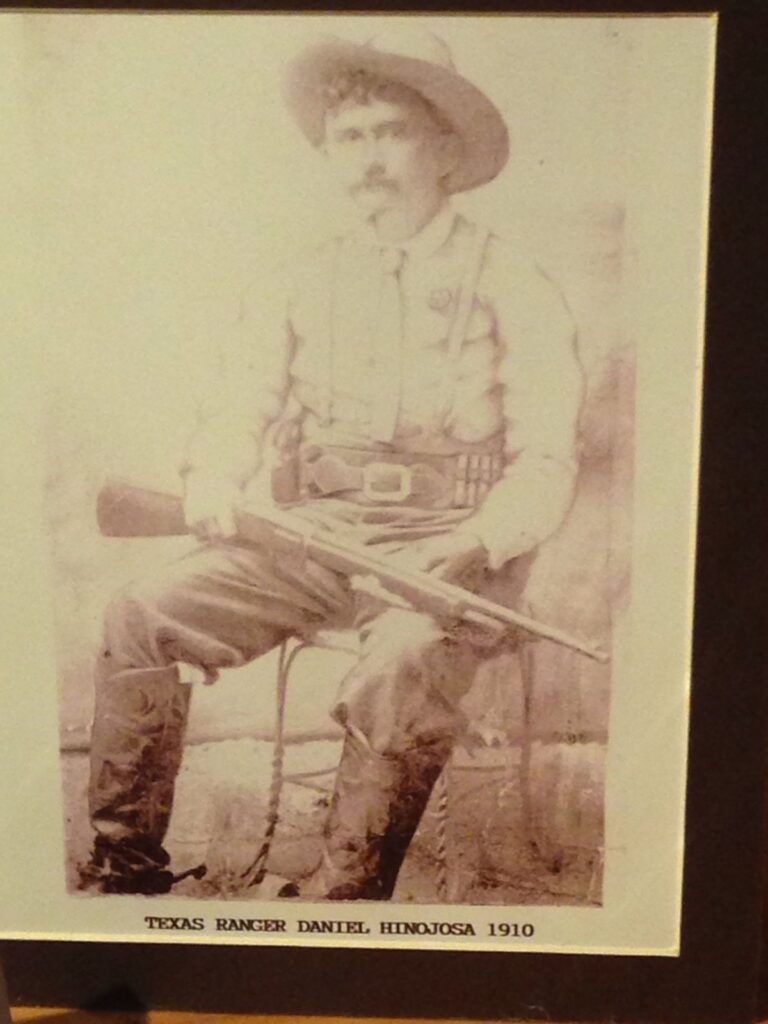
“He is unquestionably a Mexican by descent,” said Knight. “He may be an American citizen, I hope he is a good one, but the blood is there.” Sánchez retorted that “we came from Mexican descent and are proud of it but 10 times more proud that we are American citizens.”
The next witness, Brownsville attorney and prominent Republican R.B. Creager, offered chilling testimony about anti-Mexican violence perpetrated by Rangers and vigilantes. He knew some “clean gentlemen” who were Rangers. https://www.tshaonline.org/handbook/entries/creager-rentfro-banton
But “a great many” were “of the opposite character. They burned ranches, tortured civilians, and shot prisoners, sometimes leaving corpses out, trying to “terrorize” the populace. Anglos of “standing or even halfway standing” could add a name to a “black list.”
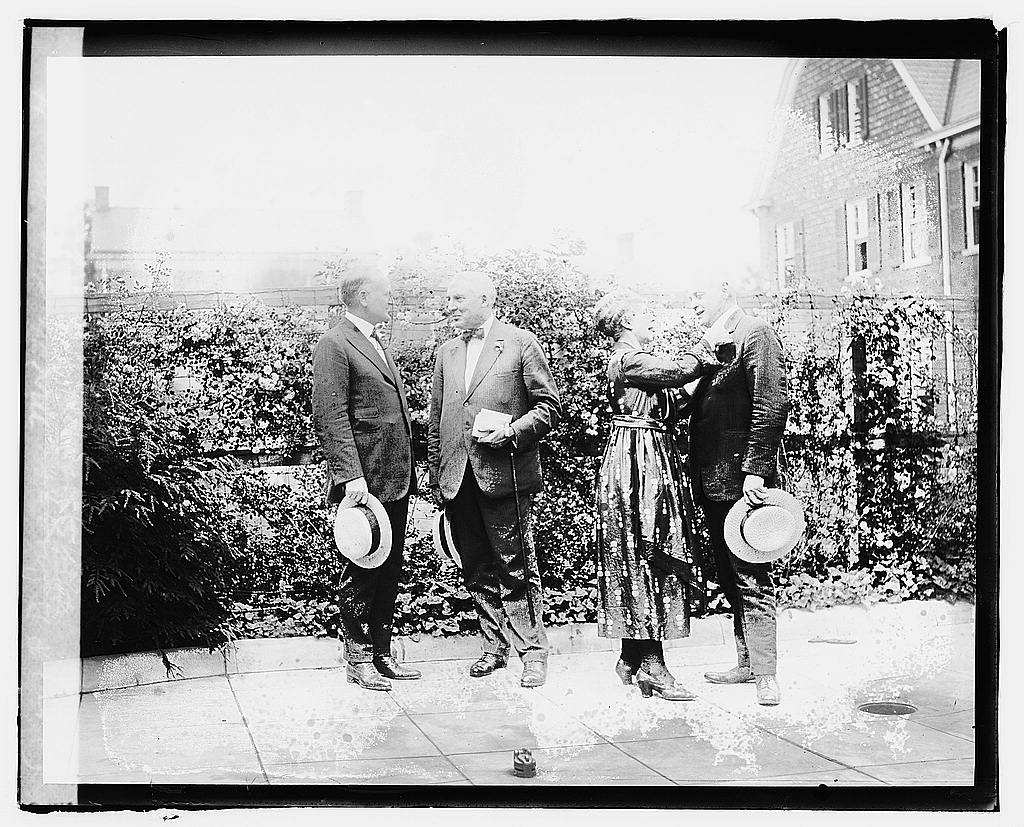
The person so named would “evaporate” or flee, explained Creager. Hundreds who were killed “were as innocent as you or I,” and local officers and citizens “followed the lead” of Rangers in their violence against Mexican descent people.
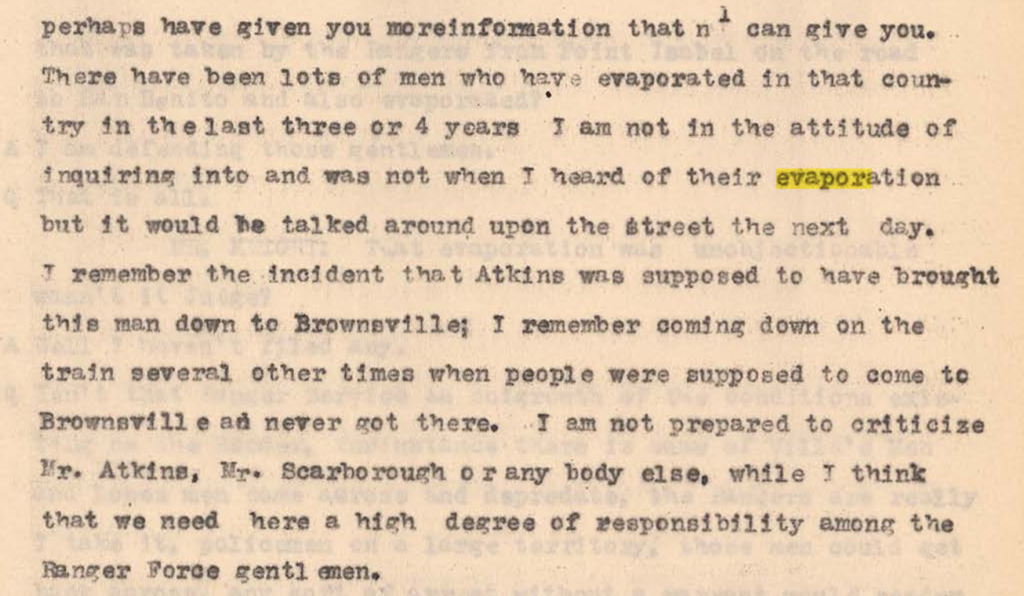
As supporting evidence to this testimony, Canales introduced a photograph of Rangers on horseback with ropes tied to corpses. Creager identified Capt. J.M. Fox and Special Ranger Tom Tate as two of the riders and said that the photograph was sold widely as a postcard.
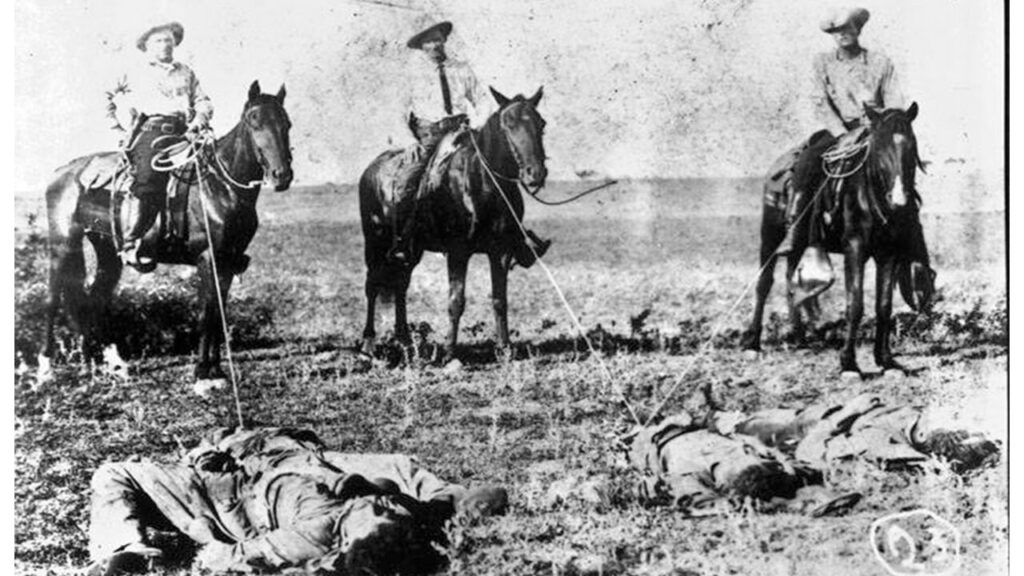
Ranger leadership, unable to attack Creager on racist grounds, pressed him to discuss the murder of white citizens. Referring to the Plan de San Diego uprising, Creager said “the conduct of those officers [Rangers] more than any one other thing caused the bandit trouble.”
Canales and Ranger attorney Knight frequently clashed. Knight pressed the matter of property damage from “bandit” raids.
Canales would have none of it, exclaiming that “this gentleman comes from Dallas where they always look at things from a dollars standpoint but we fellows over here believe … the lives of the citizens are worth more than dollars and cents.”
The last five witnesses introduced further damning testimony about Rangers, this time with respect to violence against Anglos in Sweetwater. Nolan county officials relayed concerns about Ranger drunkenness, violence, and illegal arrests.
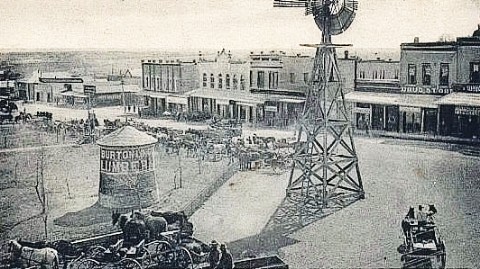
One witness, Willis Barbee, was a deputy sheriff of Nolan County and had served as a Ranger in 1911-12 and 1917-18. He said that most locals wanted the Rangers gone and the Sheriff’s office did not work with them. Another, John Bryan, the local Justice of the Peace, conveyed deep reservations about a man jailed by Rangers who was found hung in his cell. Pro-Ranger witnesses described the death as a suicide. The day was one of Canales’ strongest, with concrete evidence about Ranger violence against both Mexican and Anglos, sworn to by both Mexican and Anglo witnesses, many of whom were themselves in law enforcement. The hearings resumed the next day, treated in our next thread.
This thread is a part of the #OTD in Ranger history campaign that @Refusing2Forget is running this year. Follow this twitter handle or https://refusingtoforget.org/ranger-bicentennial-project/, and visit our website https://refusingtoforget.org/otd-calendar/ to learn more.
Key secondary sources for this thread include: Benjamin Johnson’s Revolution in Texas (pp 169-175), Monica Muñoz Martinez The Injustice Never Leaves You (182-216), Reverberations of Racial Violence and Ribb, “Reader’s Guide to the Canales Hearings.”

